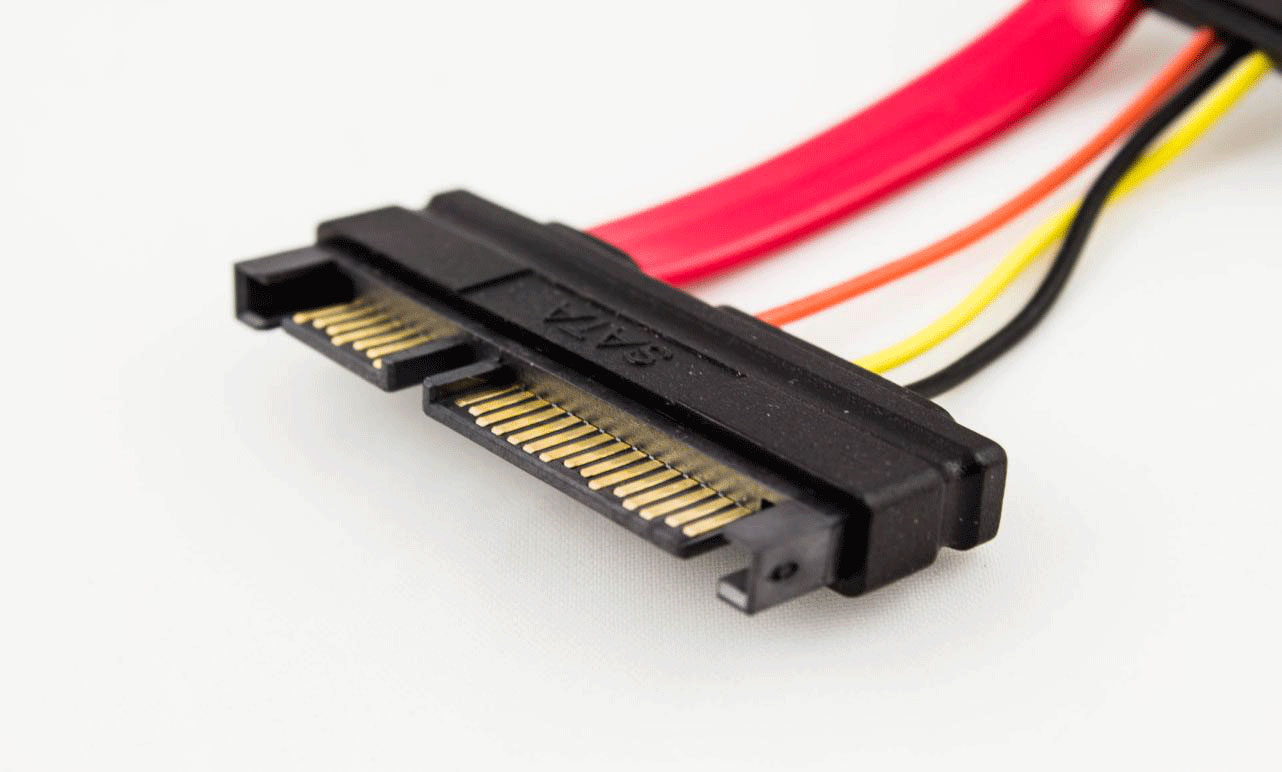SAS and SATA are technologies used by computers to transfer data from the motherboard to storage and the other way around. In this post, we will discuss how these technologies work, how one is different from the other, and what are the advantages and disadvantages of each technology.
What is SAS storage?
SAS stands for Serial-Attached SCSI (Small Computer System interface). It is a method of transferring data between computer peripheral devices one bit at a time through a thin cable. In the case of business enterprises, SAS is crucial when it comes to accessing mass storage devices.
How does SAS function?

SAS is a protocol for point-to-point data transfer between computers and storage devices. It means that data is transferred directly from the storage space to the computer it is storing the data for and the other way around, directly through a physical cable that connects them. The term serial denotes that the data is transferred one bit at a time, sequentially.
The SAS system combines four components
- Targets: The storage devices that are connected to a SAS system.
- Initiators: The mechanism for receiving and responding to requests from the targets.
- Service Delivery Subsystem: The system that connects the SAS initiators with the targets.
- Expanders: Optional port-multiplier hardware that enables you to extend the number of storage devices you can connect to a SAS system.
The SAS system is usually implemented by businesses that have substantial storage, backup, and archiving needs.
What are the advantages of the SAS storage system?
As a serial data transfer protocol, SAS has some obvious advantages over parallel data transmission protocols.
A parallel data transfer interface needs two separate cables for incoming and outgoing data. That means you would need one cable to transfer data from the motherboard to the storage and another for data going from the storage to the motherboard. So, how is SAS better than a parallel system?
- SAS cables are smaller and thin giving computer manufacturers more space to work with and since it’s just one cable, they can be more flexible.
- The cables for SAS are protected against magnetic field interference with built-in dividers.
- The storage device can queue incoming data.
- SAS can support 65,535 devices connected to an interface with an expander whereas a parallel SCSI can have only 16 – one host and 15 other connections.
- Parallel SCSI can sometimes be faster but it loses data if the cable length is much. You won’t encounter this problem with SAS.
- SAS is designed for 24/7 enterprise use – it is built for reliability.
What are the disadvantages of SAS?
- SAS is expensive. It does cut the cost a bit when compared to parallel systems but if you compare it to SATA (which we will talk about right after this), it is expensive.
- It consumes more power to operate.
- SAS is designed for speed hence, focuses less on storage. Most SAS drives are 500GB and anything more than that is very expensive.
What is SATA storage?

SATA stands for Serial Advanced Technology Attachment. As the name suggests, this system uses a serial mode of data transmission just like SAS. It is the standard data transfer interface used in personal computers. SATA was a great improvement over the parallel attachment systems. It gives a throughput of 6GB/second.
Unlike SAS, SATA is focused on storage space and it is rather easy to find SATA drives ranging from 1TB to 16TB.
Advantages of SATA
- SATA devices are less expensive than SAS
- SATA is optimized for space, it offers more storage for less money.
- They have lower consumption of power
- The SATA cables can be short – up to 1 meter.
Disadvantages of SATA
- It has a lower reliability quotient than SAS as it is mostly used for personal computers.
- It does not support long cable runs
- It supports only 32 point-to-point connections whereas SAS supports 256.
- SATA has a lower throughput rate than SAS
SAS vs SATA
| Category | SAS | SATA |
| Throughput | Up to 12Gbps | 6Gbps |
| Storage | Less compared to SATA | More compared to SAS |
| Cost | It’s more expensive than SATA | Less expensive |
| Latency | Below 100 microseconds to over 100 milliseconds | Below 1 millisecond to over 100 milliseconds |
| Queues | 1 | 1 |
| Command per queue | 256 | 32 |
| Applications | Servers and Enterprise Applications | Personal Computers |
Bottomline
Both SAS and SATA are great improvements from the parallel data transmission systems as they have cut the cost and physical space required while barely compromising on transfer speed. However, comparing SAS and SATA is a little unfair as both are designed and meant for different purposes and both have features that cater to their intended user bases. For instance, SATA is mostly for use in PCs hence it does not need as much reliability as SAS, so it can cut some costs in that aspect. Similarly, SAS has to consume more power in order to support the long cable runs – it is a necessity for enterprise usage.
Related: KeePass vs. LastPass – Which Password Manager to Choose
Related: Stata vs. R – What’s Better for Data Science Professionals?




